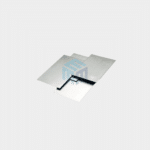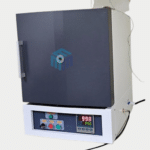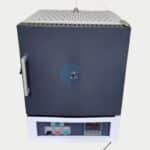Silicon carbide (SiC) heating elements are extensively utilized in industrial furnaces and high-temperature applications due to their outstanding properties. These heating elements offer numerous advantages and serve various industries. Below are the key applications and benefits of silicon carbide heating elements in furnaces:
Applications:
High-Temperature Furnaces: SiC heating elements are frequently used in high-temperature industrial furnaces such as electric arc furnaces, rotary kilns, and induction furnaces, where temperatures can surpass 2,000°C (3,632°F). They are especially suitable for applications requiring extremely high temperatures.
Metal Heat Treatment: These heating elements are employed in the heat treatment of metals, including processes like annealing, hardening, tempering, and sintering. Their ability to handle high temperatures and provide uniform heat distribution makes them ideal for these applications.
Ceramics and Glass Manufacturing: SiC heating elements are crucial in the production of ceramics and glass, where consistent and precise heating is necessary for processes like shaping, fusing, and annealing.
Chemical Processing: In the chemical industry, SiC heating elements are used in applications such as chemical vapor deposition (CVD) and other high-temperature reactions. They can endure harsh chemical environments and maintain stable performance.
Semiconductor Manufacturing: Silicon carbide heating elements are integral to semiconductor fabrication processes requiring high-temperature ovens and furnaces, such as doping, diffusion, and annealing of silicon wafers.
Kilns and Pottery: In the pottery and ceramic industries, SiC heating elements are used in kilns for firing clay and porcelain products due to their longevity and uniform heating capabilities.
Heat Treating of Alloys: These heating elements are also used in the heat treatment of metal alloys, including stainless steel, to enhance their mechanical properties and corrosion resistance.
Laboratory Furnaces: SiC heating elements are incorporated in small-scale and laboratory furnaces for precise temperature control and uniform heating in various research and testing applications.
Advantages:
High-Temperature Capability: SiC heating elements can endure extreme temperatures, making them suitable for applications that require very high levels of heat.
Rapid Heating and Cooling: They possess excellent thermal conductivity, allowing for quick heating and cooling cycles, thus improving process efficiency.
Long Service Life: These heating elements have a prolonged operational lifespan, reducing the need for frequent replacements and associated downtime.
Uniform Heating: SiC heating elements provide even and consistent heat distribution, ensuring uniform material heating and preventing hot spots in the furnace.
Chemical Resistance: These elements are resistant to many corrosive gases and chemicals, making them suitable for processes in aggressive environments.
Low Maintenance: They require minimal maintenance, which reduces operating costs and downtime.
High Power Density: SiC heating elements can deliver high power in a compact space, beneficial for applications with limited furnace dimensions.
Low Thermal Expansion: Silicon carbide has a low thermal expansion coefficient, reducing stress on the heating element and extending its lifespan.
In summary, silicon carbide heating elements are vital components in high-temperature industrial and laboratory furnaces. Their exceptional temperature resistance, durability, uniform heating, and chemical resistance make them well-suited for a broad range of applications across various industries.
M-Kube Enterprise is an Indian company catering customized laboratory products, laboratory consumables, and laboratory solutions in India, Australia, New Zealand, Singapore, Malaysia, South Korea, USA, Dubai, Philippines, Indonesia, and Vietnam.






